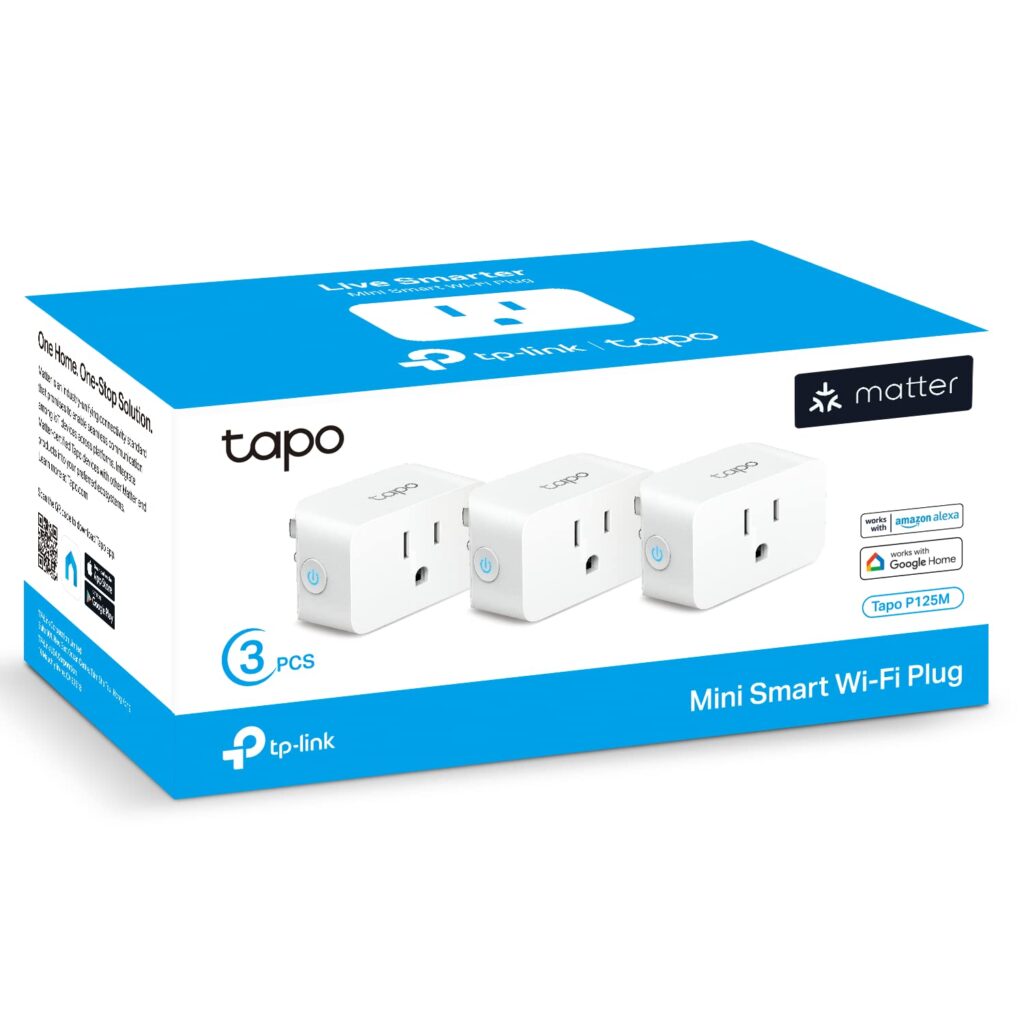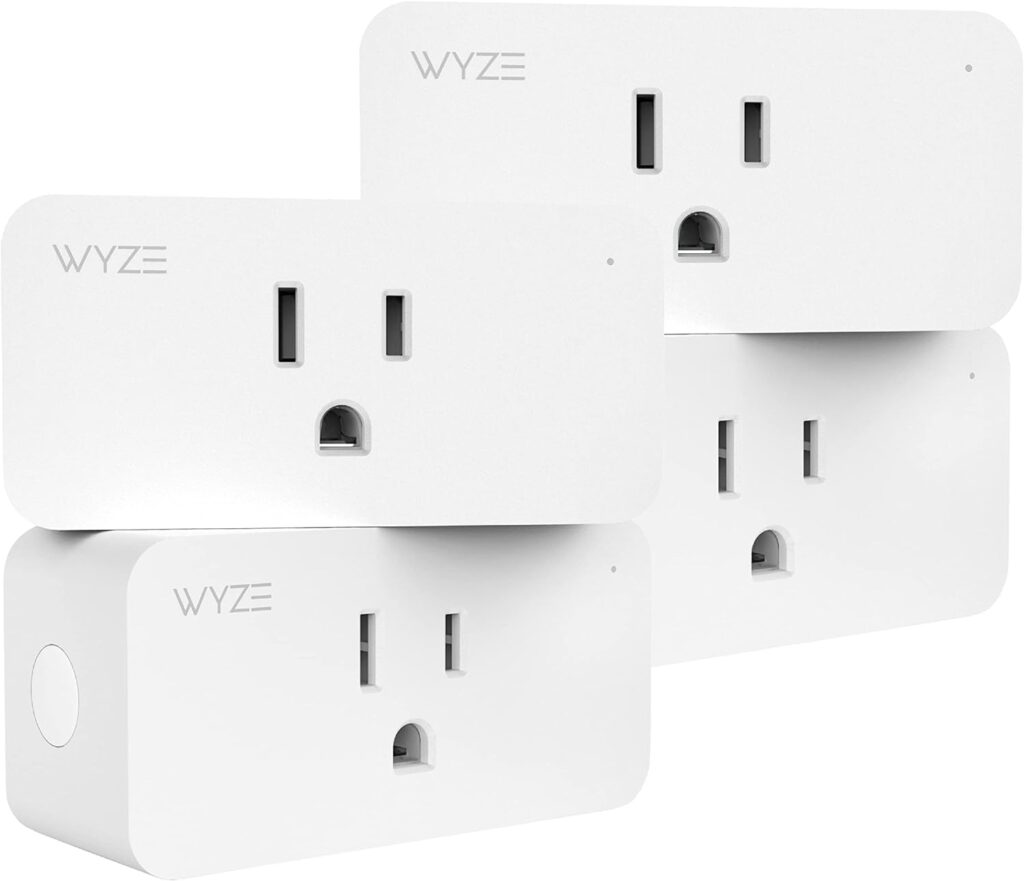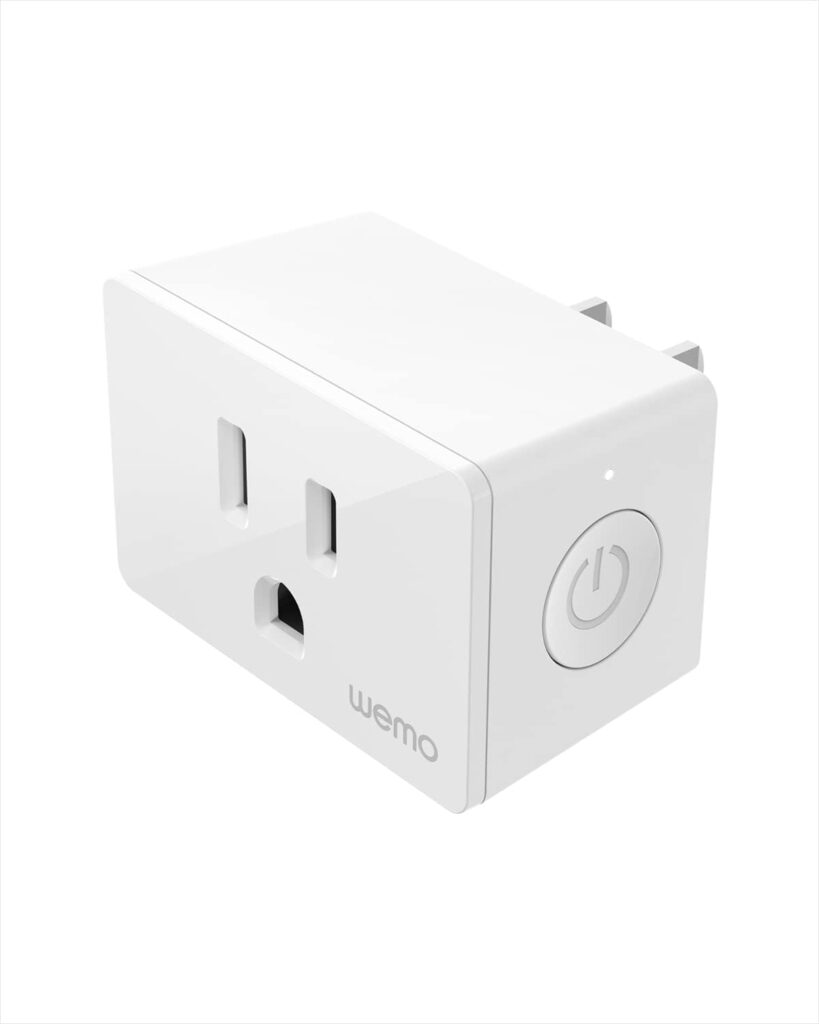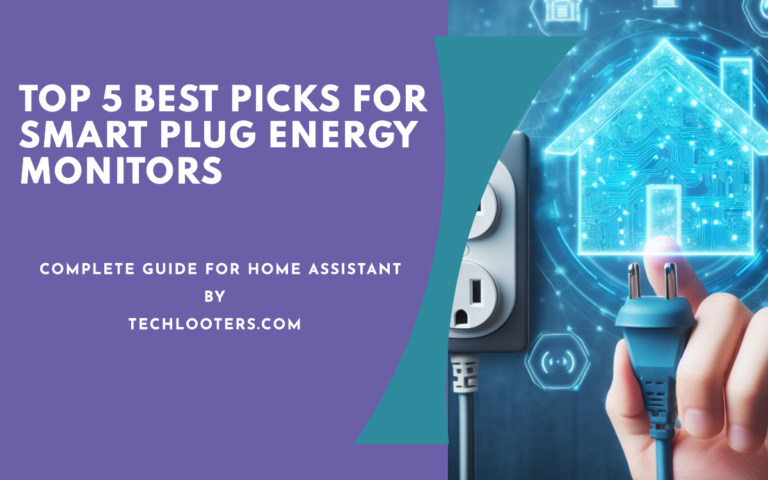Overview of Smart Plug Energy Monitors Home Assistant
In the ever-evolving world of home automation, the integration of smart plug energy monitors Home Assistant is revolutionizing how we manage and conserve energy. As a cornerstone of the smart home, these devices offer a seamless blend of convenience and efficiency, making them an essential component for any eco-conscious homeowner or tech enthusiast.
What is a Smart Plug Energy Monitor?
A smart plug energy monitor is a device that plugs into a standard electrical outlet, allowing you to control and monitor the energy usage of any appliance connected to it. When integrated with Home Assistant, a popular open-source home automation platform, these smart plugs provide real-time data and remote control of your home appliances. This integration not only elevates the convenience of managing your devices but also plays a crucial role in monitoring and reducing your home's energy consumption.
How Do Smart Plug Energy Monitors Work with Home Assistant?
The functionality of smart plug energy monitors Home Assistant setup is both straightforward and sophisticated. Once connected to your home network, these smart plugs communicate with Home Assistant, enabling you to track energy usage, set schedules, and remotely control your appliances via the Home Assistant interface. Whether you're using Wi-Fi, Zigbee, or Z-Wave based plugs, the seamless integration with Home Assistant ensures a user-friendly experience.
Benefits of Using Smart Plug Energy Monitors Home Assistant
- Energy Efficiency: One of the primary advantages is the ability to monitor and analyze your household's energy consumption. Smart plugs provide valuable insights into which appliances are energy hogs, helping you make informed decisions about your usage.
- Convenience and Control: Whether you're at home or away, you can easily turn appliances on or off, set schedules, and automate routines through the Home Assistant app, offering unparalleled convenience.
- Cost Savings: By identifying and reducing unnecessary energy usage, smart plug energy monitors can lead to significant savings on your electricity bills.
- Enhanced Safety: Remote monitoring means you can turn off appliances even when you're not at home, adding an extra layer of safety and peace of mind.
Top Picks for Smart Plug Energy Monitors Home Assistant
When delving into the realm of smart home automation with Home Assistant, selecting the right smart plug energy monitor is crucial. These devices not only provide control and monitoring of your home appliances but also play a pivotal role in energy conservation and efficiency. In this guide, we will highlight some of the top picks for smart plug energy monitors that seamlessly integrate with Home Assistant, ensuring you make an informed decision to enhance your smart home experience.
1. TP-Link Kasa Smart Plug
Regarded as one of the leading options in the market, the TP-Link Kasa Smart Plug stands out for its exceptional compatibility with Home Assistant, reliability, and comprehensive features. It offers remote control, energy usage monitoring, and easy scheduling without needing additional hubs, making it a top choice for Home Assistant users.

2. Wyze Plug
Known for its affordability and reliability, the Wyze Plug is a superb choice for budget-conscious users. Despite its low price, it doesn't skimp on features, offering energy monitoring, schedules, and timers, along with a compact design that won’t block adjacent outlets. Its native integration with Home Assistant ensures a hassle-free setup.

3. Philips Hue Smart Plug
For those invested in the Philips Hue ecosystem, the Philips Hue Smart Plug is an ideal match. It offers advanced features through the Philips Hue bridge, including dimming capabilities, exceptional build quality, and seamless integration with both Home Assistant and Apple HomeKit.

4. Belkin Wemo Mini
The Belkin Wemo Mini is known for its compact size and reliable performance. It supports essential features like energy monitoring, scheduling, and remote control, along with integrations with popular voice assistants. Its Wemo integration with Home Assistant makes it a versatile and user-friendly option.

5. GE Cync Smart Plug
The GE Cync Smart Plug offers an excellent balance of price and functionality. It provides real-time energy usage data, voice control capabilities, and easy integration with Home Assistant. Its streamlined design and affordable pricing make it an attractive choice for those starting their smart home journey.

Choosing the right smart plug energy monitor for your Home Assistant setup depends on various factors such as compatibility, features, and budget. The options listed above represent some of the best in the market, catering to different user needs and preferences. By selecting a smart plug that aligns with your specific requirements, you can enhance your home automation experience, contribute to energy conservation, and enjoy a more intelligent, efficient home.
Installing Smart Plug Energy Monitors Home Assistant
Integrating smart plug energy monitors Home Assistant transforms ordinary homes into intelligent, energy-efficient spaces. This guide walks you through the installation process, ensuring you get the most out of your smart home setup. By following these steps, you can effortlessly monitor and control your home appliances, contributing to both convenience and energy savings.
Step 1: Choose the Right Smart Plug
Select a smart plug that is compatible with Home Assistant. Consider factors like protocol (Wi-Fi, Zigbee, Z-Wave), energy monitoring capabilities, and ease of use. Brands like TP-Link Kasa, Wyze, and Philips Hue offer popular choices that work seamlessly with Home Assistant.
Step 2: Connect the Smart Plug to Your Network
Plug the smart plug into an electrical outlet and connect it to your home Wi-Fi network. Follow the manufacturer’s app instructions for initial setup. Ensure that the plug is within a good range of your Wi-Fi router or Zigbee/Z-Wave hub, if applicable.
Step 3: Integrate with Home Assistant
Open your Home Assistant dashboard. Navigate to the 'Configuration' menu and select 'Integrations'. Click on 'Add Integration' and select your smart plug brand. Follow the prompts to connect your smart plug to Home Assistant. This process may vary slightly depending on the plug's brand and protocol.
Step 4: Configure and Customize
Once integrated, customize the settings of your smart plug in Home Assistant. Assign it to a room, name the device for easy identification, and set up any specific automations or scenes. For energy monitoring plugs, explore the energy dashboard in Home Assistant to view real-time consumption data.
Step 5: Test and Troubleshoot
Test the smart plug by remotely controlling the connected appliance via the Home Assistant interface. Ensure that the energy monitoring features are accurately reflecting the usage data. If any issues arise, refer to the manufacturer’s support or the Home Assistant community forums for troubleshooting advice.
Installing smart plug energy monitors Home Assistant is a straightforward process that can significantly enhance your home automation experience. By meticulously choosing the right plug, setting it up correctly, and integrating it with Home Assistant, you can gain greater control over your home appliances, optimize energy usage, and step into the future of smart living. Whether you’re a tech-savvy individual or a beginner in home automation, these steps will guide you to a successful and rewarding setup.
Comparing Wi-Fi, Zigbee, and Z-Wave Smart Plugs for Energy Monitoring
When integrating smart plugs into a Home Assistant system, it's crucial to understand the differences between Wi-Fi, Zigbee, and Z-Wave protocols. Each offers unique advantages for energy monitoring and home automation. This comparison will help you determine which type of smart plug is best suited for your Home Assistant setup, ensuring optimal performance and convenience.
Wi-Fi Smart Plugs
Wi-Fi smart plugs connect directly to your home Wi-Fi network, offering easy setup without the need for additional hubs. They are known for their accessibility and broad compatibility with various devices and platforms.
- Pros: Easy to set up and use; widely available; typically offer a broader range of features.
- Cons: Can be more vulnerable to network congestion; dependent on the range and strength of your Wi-Fi signal.
Zigbee Smart Plugs
Zigbee smart plugs use a low-power, wireless mesh network, requiring a Zigbee hub (like Home Assistant Yellow) for connectivity. They are known for their stability and low energy consumption.
- Pros: More reliable connectivity in larger homes due to mesh network; generally faster response times; less interference with Wi-Fi.
- Cons: Requires a Zigbee hub; sometimes more expensive than Wi-Fi alternatives.
Z-Wave Smart Plugs
Similar to Zigbee, Z-Wave smart plugs operate on a mesh network and require a Z-Wave compatible hub. They are often chosen for their robust security features and strong network reliability.
- Pros: Strong signal reliability and range; high interoperability standards; secure communication.
- Cons: Requires a Z-Wave hub; generally more expensive; fewer product options compared to Wi-Fi and Zigbee.
Key Considerations in Choosing a Protocol
- Range and Connectivity: Consider the size of your home and the range of the wireless protocol. Zigbee and Z-Wave offer better coverage in larger homes due to their mesh networking capabilities.
- Hub Requirement: Wi-Fi plugs connect directly to your network, while Zigbee and Z-Wave require a compatible hub. Choose based on your preference for simplicity or advanced networking.
- Energy Monitoring Accuracy: All three types can provide energy monitoring, but the precision and features might vary. Check if the plug supports real-time monitoring and historical data analysis.
- Integration with Home Assistant: Ensure that the smart plug you choose is compatible with Home Assistant. Some may offer more seamless integration and easier setup than others.
Maximizing Energy Savings with Smart Plugs in Home Assistant
Harnessing the power of smart plug energy monitors in conjunction with Home Assistant is a game-changer in achieving energy efficiency and cost savings in your home. This guide provides insights on how to optimize the use of smart plugs for maximum energy savings, blending smart technology with eco-friendly practices.
Understand Your Energy Consumption
Start by using smart plugs to monitor the energy usage of individual devices. Home Assistant's energy dashboard can display the energy consumption data collected from smart plugs, helping you identify which appliances consume the most power.
Set Smart Schedules and Automations
Use Home Assistant to create schedules and automations for your smart plugs. For example, program your smart plugs to turn off non-essential devices during hours when they're not in use, like turning off gaming consoles or TVs at bedtime. This reduces unnecessary power consumption.
Use Smart Plugs for High-Energy Appliances
Focus on connecting high-energy appliances like heaters, air conditioners, or dehumidifiers to smart plugs. These devices often have the most significant impact on your energy bill, and controlling them smartly can lead to substantial savings.
Implement Standby Power Saving
Many devices consume power even when they’re off, known as standby or vampire power. Use smart plugs to completely turn off such devices when not in use, preventing this stealthy energy drain.
Leverage Real-Time Monitoring
Keep an eye on real-time energy usage through Home Assistant. This immediate feedback allows you to make adjustments on the fly, like turning off a device that’s unexpectedly using a lot of power.
Educate and Engage Your Household
Share insights from your energy monitoring with your household. Educating family members about energy consumption can encourage more energy-conscious behaviors.
Regularly Review and Adjust
Regularly review your energy consumption data in Home Assistant and adjust your smart plug settings accordingly. As your lifestyle changes, so too might your energy-saving strategies.
Maximizing energy savings with smart plugs and Home Assistant is an effective way to reduce your carbon footprint and lower your energy bills. By monitoring and controlling energy usage, setting smart automations, and engaging your household in energy-saving practices, you can create a more sustainable and cost-effective living environment. Embrace the full potential of your smart home technology to make a significant impact on both your wallet and the planet.
Creative Uses of Smart Plugs in Home Automation
Smart plugs, especially when integrated with Home Assistant, offer a plethora of creative possibilities that go beyond simple on/off controls. These innovative applications can enhance convenience, improve energy efficiency, and even provide added security. Let’s explore some of the most inventive ways to utilize smart plugs in your home automation setup.
1. Managing Lamps and Lighting
Use smart plugs to control lamps and ambient lighting in your home. Set them to turn on or off at specific times, or use motion sensors to activate lighting only when needed. This not only adds convenience but also helps in saving energy.
2. Automating Coffee Makers and Kitchen Appliances
Connect your coffee maker or other kitchen appliances to a smart plug. Schedule them to turn on in the morning for a fresh brew ready when you wake up, or ensure they are off when not in use for safety and energy savings.
3. Controlling Electronics and Entertainment Systems
Smart plugs can control TVs, gaming consoles, and other electronics. Automate these devices to turn off at bedtime or when not in use, reducing energy consumption and extending the life of your electronics【.
4. Automating Holiday and Decorative Lighting
Automate your holiday lights or garden lighting using smart plugs. Schedule them to turn on in the evening and off late at night, adding both beauty and security to your home while conserving energy.
5. Managing Aquariums and Pet Care Devices
For pet owners, smart plugs can control aquarium lights, pumps, or pet feeders. Schedule feeding times or create an ideal environment for your aquatic life, all automated for convenience.
6. Remote Control of Space Heaters and Fans
Use smart plugs to remotely control portable heaters or fans. Turn them on before arriving home or off when leaving, ensuring comfort while also being energy-efficient.
7. Implementing Smart Actions for Safety
Connect devices like hair straighteners or curling irons to smart plugs. Set them to automatically turn off after a certain period, preventing potential hazards due to overheating or forgetting to turn them off.
8. Energy Monitoring for Efficient Usage
Leverage the energy monitoring feature of smart plugs to analyze usage patterns. Identify and reduce wasteful consumption, shutting off devices not in active use, and making more informed energy decisions.
9. Assisting in Home Security
Use smart plugs to turn lights or radios on and off while you’re on vacation, simulating occupancy and adding an extra layer of security to your home.
The versatility of smart plugs in a Home Assistant environment opens up a world of possibilities for creative home automation. From enhancing convenience and safety to optimizing energy use and contributing to a sustainable lifestyle, the use of smart plugs can significantly upgrade your home automation experience. By exploring these creative uses, you can transform your living space into a more efficient, secure, and comfortable environment.
Essential Security Tips for Smart Plugs
Incorporating smart plugs into your Home Assistant setup can greatly enhance convenience and energy efficiency. However, it's crucial to ensure these devices are secure to protect your home network and personal data. Here, we discuss essential security tips for using smart plugs effectively and safely.
1. Use Strong, Unique Passwords
Always set up your smart plugs and related accounts with strong, unique passwords. Avoid common or easily guessable passwords. This simple step is fundamental in preventing unauthorized access to your smart home system.
2. Enable Two-Factor Authentication (2FA)
If the smart plug's app offers two-factor authentication, enable it. This adds an extra layer of security, ensuring that even if your password is compromised, there's an additional barrier to unauthorized access【35†source】.
3. Keep Firmware Updated
Regularly check for and install firmware updates for your smart plugs. Manufacturers often release updates to patch security vulnerabilities and improve functionality. Keeping your devices updated helps in safeguarding against potential security threats.
4. Use a Separate IoT Network
Consider connecting your smart home devices, including smart plugs, to a separate network dedicated to your IoT (Internet of Things) devices. This can prevent potential intruders from gaining access to the main network where your sensitive data is stored.
5. Opt for Latest Encryption Standards
Ensure that your smart plugs and Wi-Fi router use current encryption standards like WPA3 for Wi-Fi and AES or SSL for data transmission. This helps in securing the communication between your smart devices and the network.
6. Be Cautious with Permissions and Data Sharing
Be mindful of the permissions you grant to your smart plug apps. Limit the information shared with these apps to what's necessary. Understanding and controlling the data shared with these devices can significantly enhance your privacy and security.
7. Monitor Network Activity
Use network monitoring tools to keep an eye on your smart plugs' activity. Look out for any unusual or unexpected traffic that might indicate a security breach or an attempt at unauthorized access.
8. Choose Reputable Brands
Invest in smart plugs from reputable manufacturers with a track record of security and reliability. Read reviews and research the brand's commitment to security before making a purchase.
By following these essential security tips, you can enjoy the benefits of smart plugs in your Home Assistant setup without compromising the safety and integrity of your home network. Smart home security is a continuous process, and staying informed and vigilant is key to protecting your digital and physical spaces. Remember, the smarter your home, the smarter you need to be about security.
What are the Key Considerations for Choosing Smart Plugs?
Selecting the right smart plugs for your Home Assistant setup is more than just a matter of convenience; it's about finding the perfect balance between functionality, compatibility, and security. Here are the key considerations to keep in mind when choosing smart plugs for your smart home ecosystem.
1. Compatibility with Home Assistant
Ensure that the smart plug is compatible with Home Assistant. Compatibility ensures seamless integration and a smooth user experience. Check if the plug requires additional hubs or hardware for integration with Home Assistant.
2. WiFi Connectivity and Stability
The smart plug should offer stable and reliable WiFi connectivity. Frequent dropouts can disrupt automations and control, so choose a plug known for maintaining a solid connection.
3. Electrical Load Capacity
Consider the electrical load of the devices you plan to connect to the smart plug. Most household devices are compatible with standard 15-amp plugs, but larger appliances may require plugs with a higher rating.
4. Physical Size and Design
The design of the plug matters, especially in tight spaces. A compact, low-profile plug that doesn’t obstruct adjacent outlets is generally preferable. Some models offer right-angle designs that fit better in certain setups.
5. Energy Monitoring Features
If you're interested in tracking and reducing energy consumption, opt for smart plugs with energy monitoring capabilities. These provide insights into the power usage of connected devices, helping in effective energy management.
6. Cost and Budget Considerations
Smart plugs vary in price, typically ranging from $5 to $40. Balance the cost against the features you need. While more expensive models may offer additional features, basic models might suffice for simple on/off automation.
7. Expandability for Future Needs
If you plan to scale up your smart home setup, consider choosing a brand or model that offers bundles or multi-packs. This can be more cost-effective and ensure consistent compatibility across your devices.
8. Voice Assistant Support
Many smart plugs now support voice control via assistants like Alexa, Google Assistant, and Siri (HomeKit). If voice control is important to you, select a plug that offers this functionality.
9. Requirement for a Hub
Some smart plugs work directly with WiFi, while others require a separate hub or bridge for connectivity. Consider the ease of setup and your preference for a hub-based vs. hub-less system.
Choosing the right smart plug involves balancing a variety of factors including compatibility, connectivity, physical design, and additional features. By carefully considering these aspects, you can select smart plugs that perfectly fit your Home Assistant setup, meeting both your current needs and future home automation aspirations. With the right selection, you can enhance the functionality, efficiency, and enjoyment of your smart home.
Pros and Cons of Smart Plug Energy Monitors Home Assistant
| Pros of Smart Plugs | Cons of Smart Plugs |
|---|---|
| Affordability: A cost-effective way to introduce smart capabilities into a home. | Limited to Plugged-in Devices: Only applicable to devices that can be plugged in, limiting their range of use. |
| Remote Control: Control devices remotely via smartphone for added convenience. | Connectivity Issues: Potential reliability problems with Wi-Fi, especially in cheaper models. |
| Voice Control Integration: Compatibility with Alexa, Google Assistant, and Siri for hands-free control. | Outlet Clutter: Using multiple plugs can lead to cluttered outlets and may require additional power strips. |
| Energy Monitoring and Savings: Track and reduce energy usage, leading to lower utility bills. | Security Concerns: Potential vulnerabilities in network security and data privacy. |
| Automation and Scheduling: Automate devices based on time or routines for efficiency and comfort. | Limited Features: Basic automation and control compared to more advanced home automation systems. |
| Compact and Portable: Generally small and easy to move around, fitting various settings. | |
| Ease of Installation: Typically plug-and-play, making them user-friendly and easy to set up without professional help. |
FAQs Smart Plugs Energy Monitors Home Assistant
Can I control multiple smart plugs simultaneously?
Yes, most smart plug apps or platforms allow grouping multiple plugs to control them simultaneously, especially useful for devices in the same area or room.
Can smart plugs be used with any electronic device?
Generally, yes. Smart plugs are versatile and can be used with a wide range of devices like lamps, fans, and coffee makers. However, check the plug's power rating and compatibility with the specific device.
Are smart plugs safe to use?
Smart plugs undergo rigorous testing and adhere to safety standards. Always follow the manufacturer’s instructions and avoid overloading electrical circuits to ensure safety.
Can I control smart plugs remotely when away from home?
Yes, you can control smart plugs remotely as long as your smart plug and smartphone have an internet connection, using the respective app or smart home platform.
Can smart plugs be integrated with other smart home systems?
Yes, they are designed to integrate with various systems, including Amazon Alexa, Google Assistant, and Apple HomeKit. Ensure compatibility with your smart home ecosystem.
Do smart plugs work without WiFi?
It depends. While most use WiFi, some operate on hub protocols like Z-Wave or Zigbee and don't require WiFi. If a WiFi plug loses connection, its manual operation may be limited.
Can smart plugs be plugged into a power strip or extension cord?
Yes, but be mindful of their bulkiness which might block other outlets in a power strip. When using with an extension cord, avoid overloading and drawing too much current, especially with high-current devices like space heaters.
Can smart plugs be used outdoors?
Only use smart plugs rated for outdoor use as indoor-only plugs can pose safety risks. Outdoor plugs are usually more rugged and water-resistant.
Can smart plugs turn on computers or kettles?
Most computers won't power on automatically when connected to a smart plug. Kettles can be controlled if their power switch is already in the "ON" position before power is applied.
Should I use a smart bulb or a smart plug for lighting?
For simple on/off control, a smart plug is suitable and allows you to keep existing bulbs. For dimming and multicolour features, a smart bulb is preferable. Note that dimmable smart plugs are often more expensive and less common.





Hey there, You have done a fantastic job. I will certainly digg it and personally recommend to my friends. I’m confident they’ll be benefited from this site.
Usually I do not read article on blogs however I would like to say that this writeup very compelled me to take a look at and do it Your writing style has been amazed me Thank you very nice article